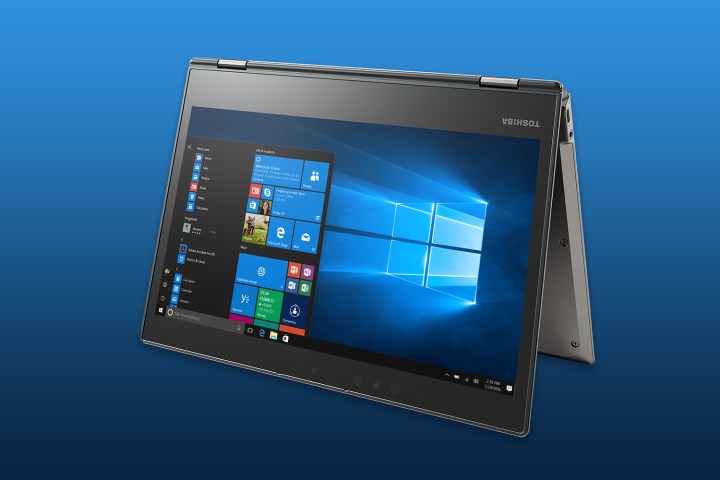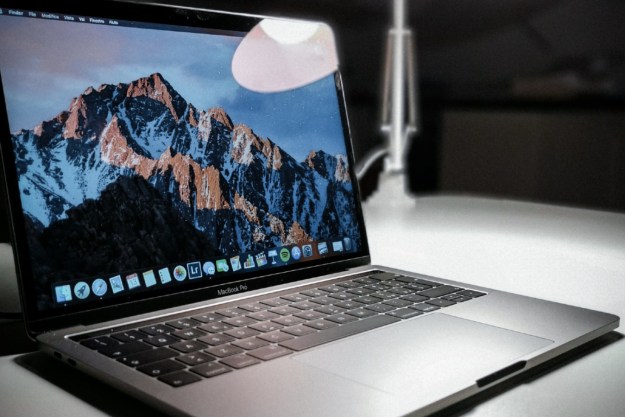
Now, 2-in-1 devices are normal.
This year’s convention saw Toshiba showcase a new hybrid laptop aimed at professional users. Dell expanded its popular XPS with the XPS 13 2-in-1, which won our Best Of CES award in the Computing category. Even Intel was on the bandwagon, as the future of Moore’s Law was demonstrated during the company’s press conference by way of a 2-in-1with a Cannon Lake processor, the first example of working silicon demonstrated.
Looking at the build-up toward this shift — and the imminent future of this form of hardware — it’s not difficult to see why the most prominent names in tech are betting big on 2-in-1s becoming the norm.
Surface tension
It’s easy to simplify the rise of the 2-in-1 form factor. Most people would point to Microsoft’s Surface line as the range of devices that spearheaded the popularity of 2-in-1 laptops. But the Windows 10 operating system is arguably just as important.
Any laptop that doesn’t have access to a similarly broad software library is going to seem deficient.
The Surface line made 2-in-1s approachable, but it was functionality that made it a success. At release, Windows held the Surface Pro line back. But as Microsoft introduced Windows 8.1, and then Windows 10, it fleshed out the device’s capabilities with features like Windows Ink, and better support for modern apps.
From Microsoft’s perspective, the popularity of the Surface line feeds into other long-term goals. But the company seems more interested in growing the overall 2-in-1 market, than simply focusing on its own in-house interests. For instance, the slate gray variant of Toshiba’s Portégé X20W will be sold exclusively through Microsoft’s brick-and-mortar retail outlets, and at Toshiba’s online store.
And all the features of Windows 10 apply just as well to other 2-in-1s as they do to Surface. Unique new spins on the concept, like Lenovo’s Yoga Book, would not be possible without support from Redmond’s engineers.
Users like 2-in-1s because they’re convenient, and PC builders like them because they represent new opportunities. However, there’s another group of people that stand to benefit from the rise of the 2-in-1 — developers.
Keeping in touch
In late 2016, leaked information indicated that both Samsung and Asus were working on 2-in-1 Chromebooks. In June 2016, the Asus Flip became the first Chromebook to gain access to the Google Play Store, and all the apps within, leading many to believe that future hybrid Chromebooks would bear the same capabilities.
Since Apple launched the App Store in 2008, mobile apps have become a very big deal indeed. For many users, a smartphone is the ultimate personal computer, and that’s prompted the development of all kind of software specifically for these devices.
There’s only one problem; a tailor-made smartphone app can’t be easily repurposed as software for a conventional PC. However, hybrid devices don’t suffer from that same shortcoming. Whether it’s in the form of Universal Windows Platform apps running on a Surface Pro, or Android apps being installed on a Chromebook, touch interfaces allow existing apps for smartphones and tablets to be utilized by another sector of users.
“2-in-1” could soon be meaningless, because our definition of a laptop will have changed.
From a development standpoint, the idea of a hybrid device is attractive because it allows existing apps to be made available on PC hardware much more easily than before. There may well be work to be done in ensuring the software works as intended on a monitor rather than on a smartphone display, but this requires much less time and effort than building from the ground up.
The Google Play Store has long since surpassed the milestone of a million available apps. The sheer breadth of software available to Chromebooks that can access the storefront is sure to be a selling point going forward — or, perhaps more accurately, any laptop that doesn’t have access to a similarly broad software library is going to seem deficient.
When two become one
Now that hybrids aren’t constrained by inferior hardware, and a touch interface isn’t seen as a gimmick, it’s difficult to see how traditional laptops could compete against their 2-in-1 rivals.
Even if users prefer to use a mouse over a touchscreen, or would rather stick with traditional desktop software over apps, a standard laptop doesn’t provide much in the way of practical advantages over a hybrid. The 2-in-1’s benefits are an addition, and cause little conflict with those who prefer more traditional PCs.
Like “ultrabook,” before it, the term “2-in-1” could soon be meaningless, because our definition of a laptop will have changed.
Editors' Recommendations
- Samsung’s new Odyssey Neo G9 gaming monitor is beautiful, but it has a fatal flaw
- CES 2023: LG’s new OLED laptop is officially thinner than the M2 MacBook Air
- Why DisplayPort 2.1 could become a big deal for PC gaming in 2023
- The redesigned new Dell XPS 13 2-in-1 officially launches on August 25
- Here’s why people are saying to buy the M1 MacBook Air instead of the M2



